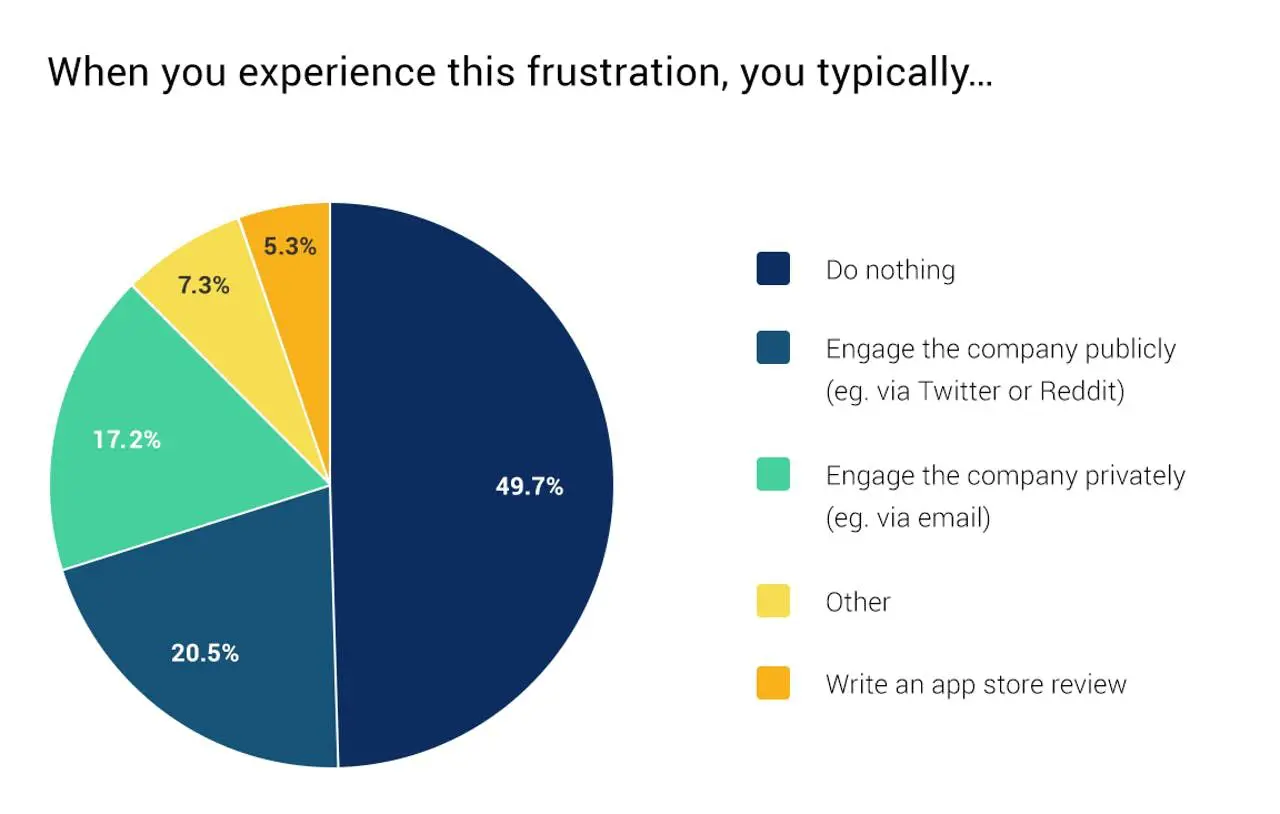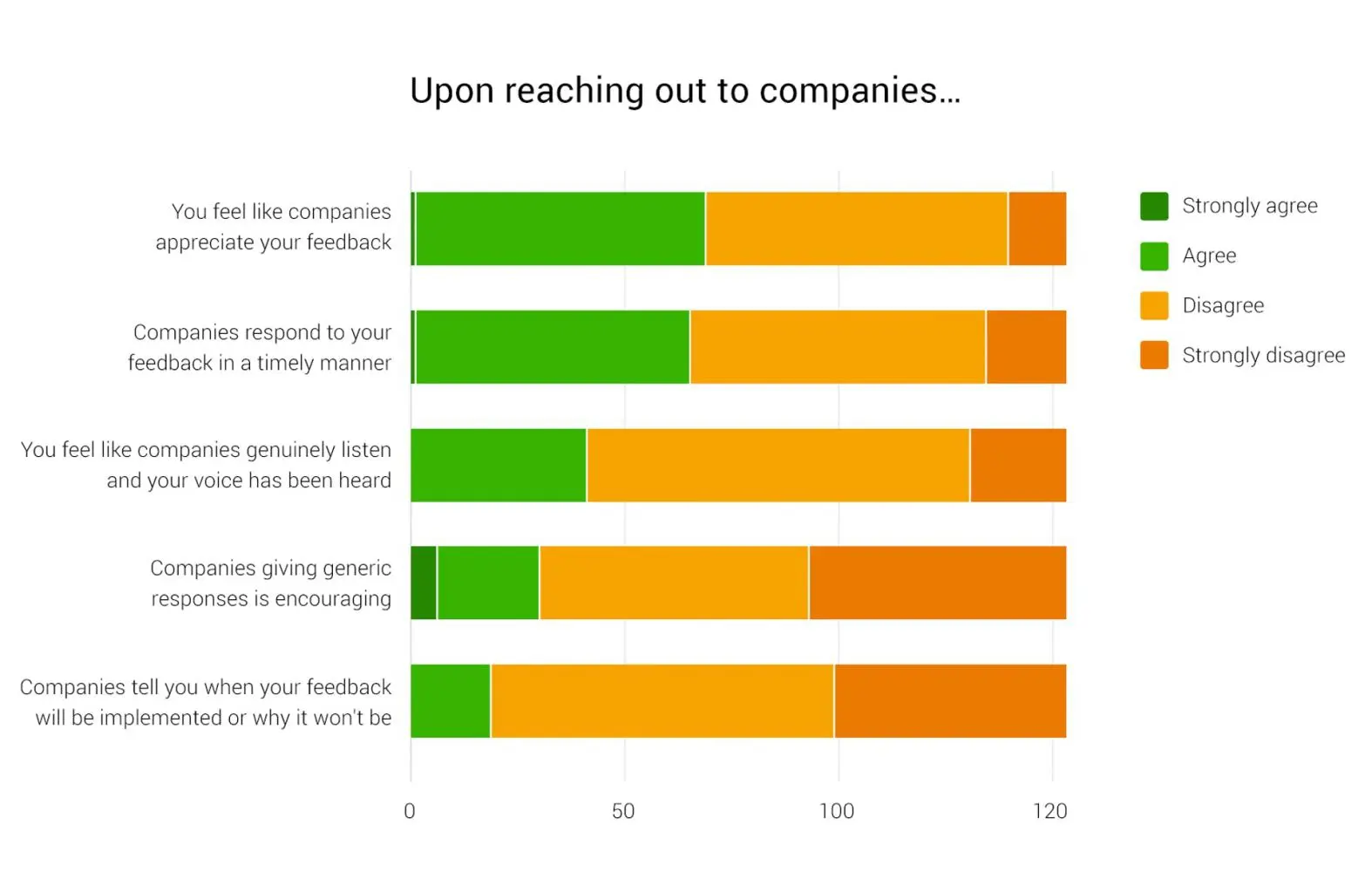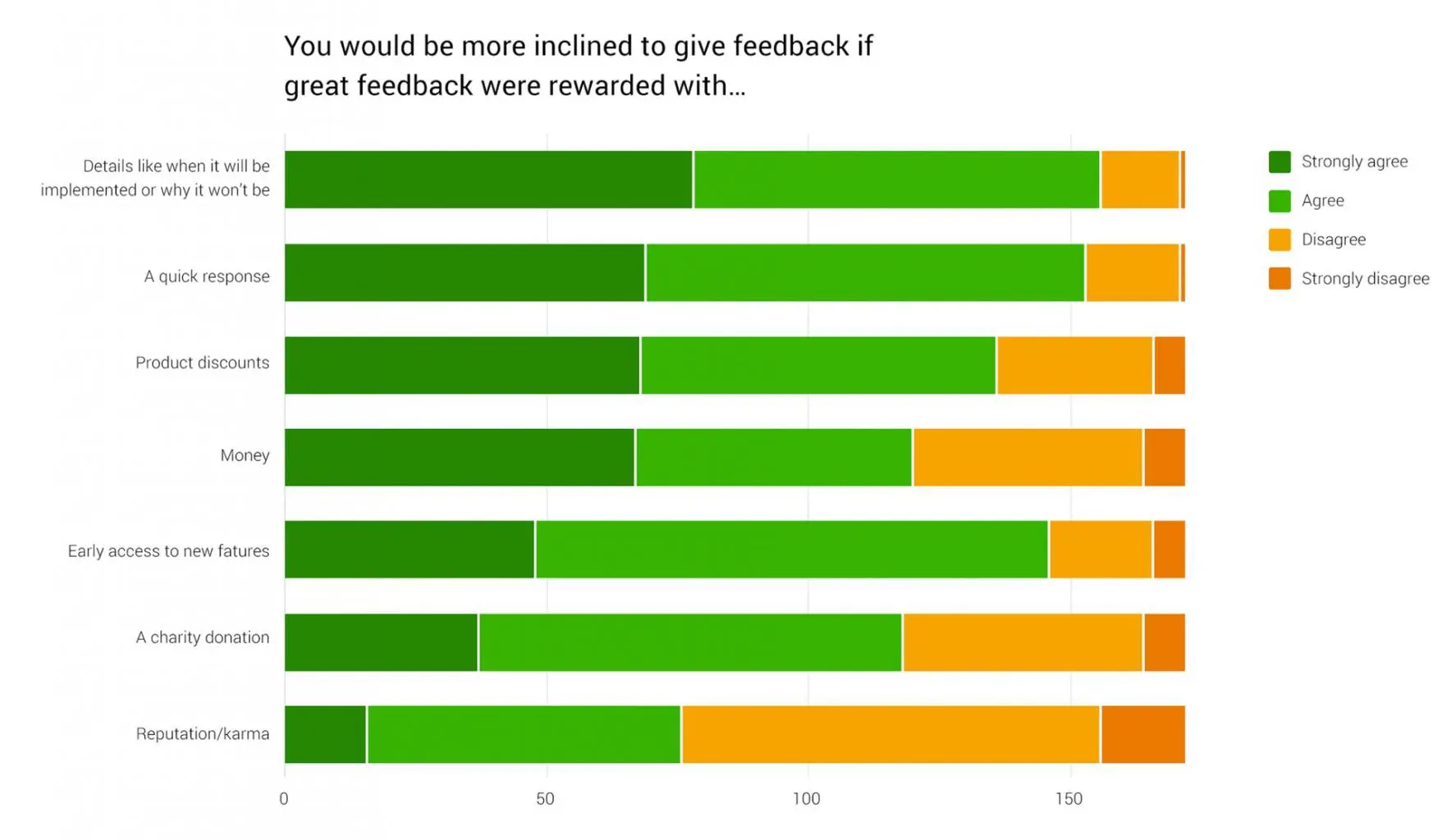We recently created a survey in order to better understand how people feel about giving feedback about tech products (like Snapchat, Netflix, etc). We believe our experience building and designing quality products makes our feedback pretty valuable, yet we rarely feel like our voices are heard when giving feedback. We wanted to find out the extent to which others like us feel similar pain points.
Overview
The target audience of this survey was software engineers, designers, and others who are involved in building tech products. Of respondents who gave demographic information, 73% were software engineers and 14% were designers.
There were 172 responses to our survey.
Raw Results
In this post I’m going to summarize and discuss the results of the survey. You can check out the raw results here.
Frustrating Experiences
The majority of the feedback Sarah and I come up with is inspired by a frustrating product experience. An app is missing a useful feature, doesn’t work as expected, or has an unnecessarily high friction UX flow. As product creators, our brains are wired to think about how we’d make this experience better.
Therefore the first part of our survey aimed to learn whether others experience this frustration and if so, how often. We also wanted to dig into what people typically do when it happens.
- 88% of respondents get frustrated when products don’t work properly or are missing a useful feature.
- 56% experience this frustration at least weekly, 75% at least monthly.
- 63% of respondents who get frustrated feel motivated to do something about it.
So a big chunk of people share our regular frustration and motivation to do something about it. What do people typically do when they have a frustrating experience?

Half of frustrated respondents typically do nothing about their frustrations. What’s really interesting is that of the respondents who said they typically do nothing, 45% of them also said they are motivated to do something. So you’ve got a big chunk of respondents who do get frustrated, are motivated to do something about it, and then do nothing.
We are not surprised by this because this is exactly how we feel. We rarely submit feedback because we have huge doubts about whether it’ll ever be seen by somebody who actually works on the product. While a lot of people do reach out, there’s definitely a huge room for improvement.
Ideas to Improve
The next section focuses on feedback. Do people have feedback? Do people give it to companies? How is their experience giving feedback?
- 90% of respondents have ideas for how the products they use could be improved.
- 61% of respondents who do have ideas rarely or never reach out to companies.
So people generally do have ideas but don’t often reach out. How is the experience of giving feedback?

Respondents generally disagree or at best feel mixed about companies handling their feedback well. Responses were largely negative and showed significant room for improvement.
To me, this explains why so many people choose not to reach out to companies… because giving feedback typically feels like writing into a vacuum. You usually don’t even know if anybody saw it, much less if it had any real impact on the product’s roadmap. Why take the time to submit feedback if you aren’t confident whether it will even be seen?
Community
Feedback is usually a one-on-one conversation between the user and the company. You email, write a review, or tweet at them and they (sometimes) respond. You rarely get to see how many other users agree with your feedback or what feedback others have for the products you use.
The next section aims to understand whether people benefit from community when giving feedback.
- 82% of respondents are curious about what others think about their feedback.
- 76% are interested in the feedback others have about the products they use.
- 80% would be willing to write feedback publicly if great feedback were rewarded.
It’s tough to say how much value people would get out of a community but you can conclude that many people are at least somewhat curious about the feedback others have and what others think about their own feedback.
The Motivation Behind Giving Feedback
We predicted that many people would report having feedback, but would not give it because giving feedback is currently a very discouraging experience. This next section digs into what type of rewards would motivate people to give more feedback.

It’s interesting that the company responding quickly and transparently is more motivating than straight up giving people money. Alongside the fact that most respondents don’t feel like companies offer transparency or respond quickly, it’s no wonder people don’t give feedback very often… the most motivating rewards are not the norm.
Many large companies have a bug bounty program that rewards white hat security researchers with money and public mentions for identifying vulnerabilities. Why doesn’t great product feedback get similar treatment? It can have a similarly large impact on a company’s business.
Takeaways
Overall I feel like other people are feeling the same pain points we are.
- Despite products working pretty well, many people still get frustrated on a regular basis and have ideas for how to make apps better.
- People rarely do anything with these ideas because giving feedback currently feels like writing into a vacuum, you usually get a discouraging generic response and it’s unclear whether your feedback is valued or will have any impact on the product roadmap.
- There are many things companies could do better to make giving feedback a better experience and to solve the frustrations people are feeling on a regular basis. They aren’t really doing them. These things include responding quickly and transparently.
- People desire transparency and to be involved in the product development process.
We have some ideas on how to drastically improve the user feedback experience, both on the giving and the receiving side. These results were pretty encouraging that we’re on the right track. We’ll be sure to share more about what we’re building soon!
Thanks
Thank you for reading to the end of this post and caring about user feedback. If you submitted a response to our survey then thanks for that! We really do appreciate you taking the time.
Like what you read? Subscribe to get more posts like this directly in your inbox






Hi Andrew!
I really like your articles and the product that you guys are developing.
This article really inspires me to also create a survey and see what users think of a particular process in my field. Can you tell me more about the way you’ve conducted this survey? Did you use ads and incentives to contact your specific audience?
Thanks and best of luck with Canny!
Richard
Hey Richard, I’m glad you like our blog and product! I got pretty lucky. A few of my previous colleagues with a big Twitter following retweeted me on Twitter, and I think I may have gotten some responses from Ask HN. Honestly got a lot more responses than I thought I would. In retrospect, I think my survey was kind of validating our solution, which isn’t super useful. I think something a lot more useful would be to interview your target audience, and ask about the problems they face, without even mentioning your solution. Once you’ve found the problem you… Read more »